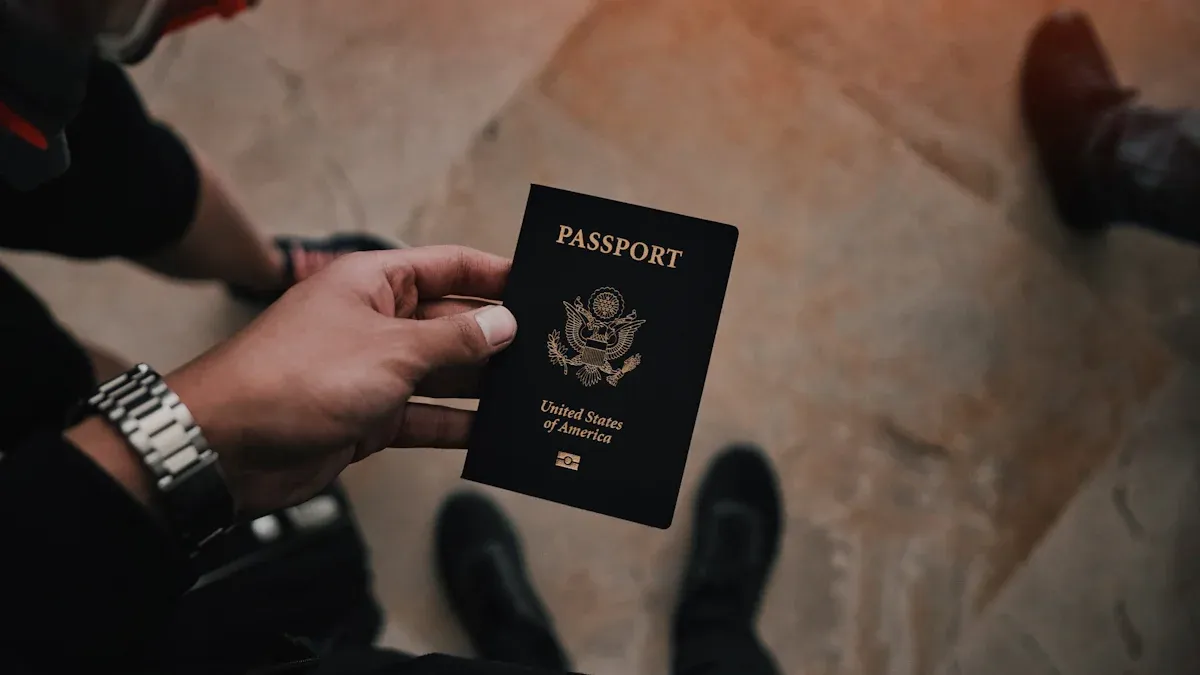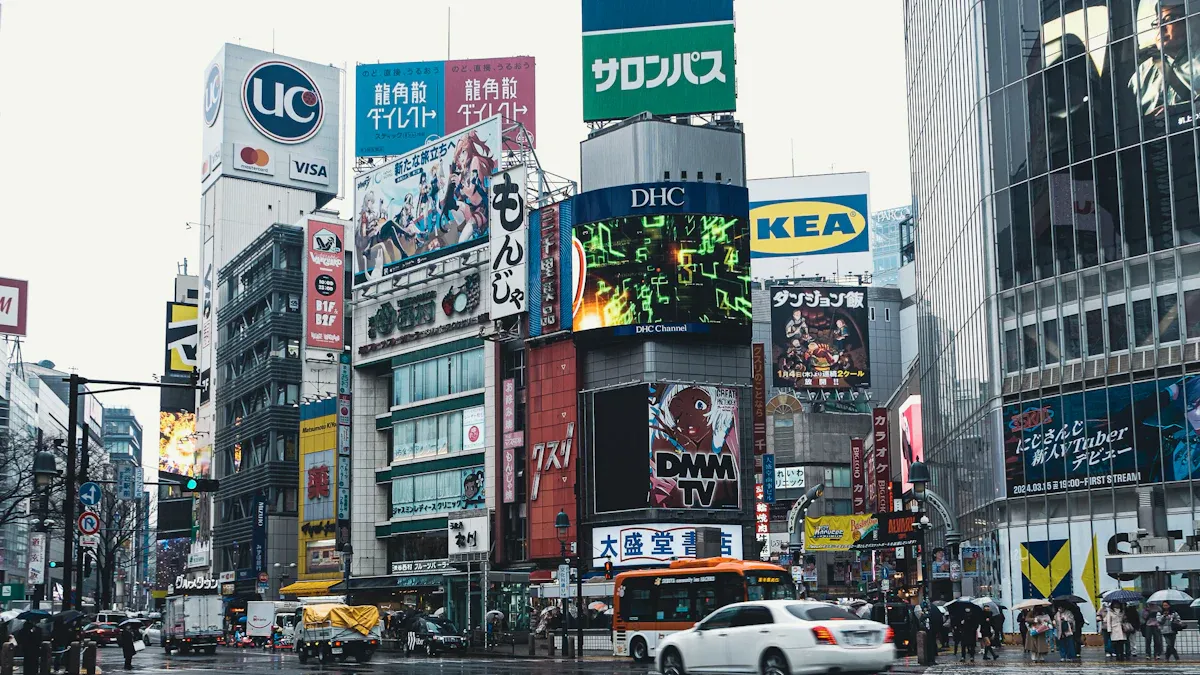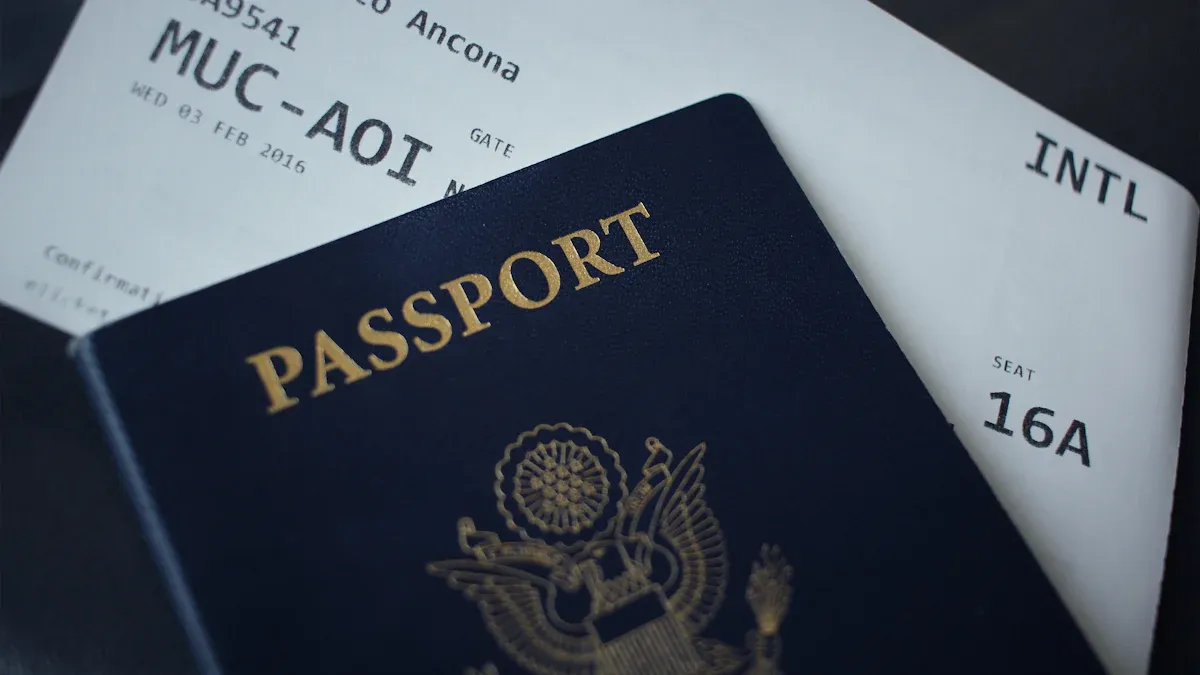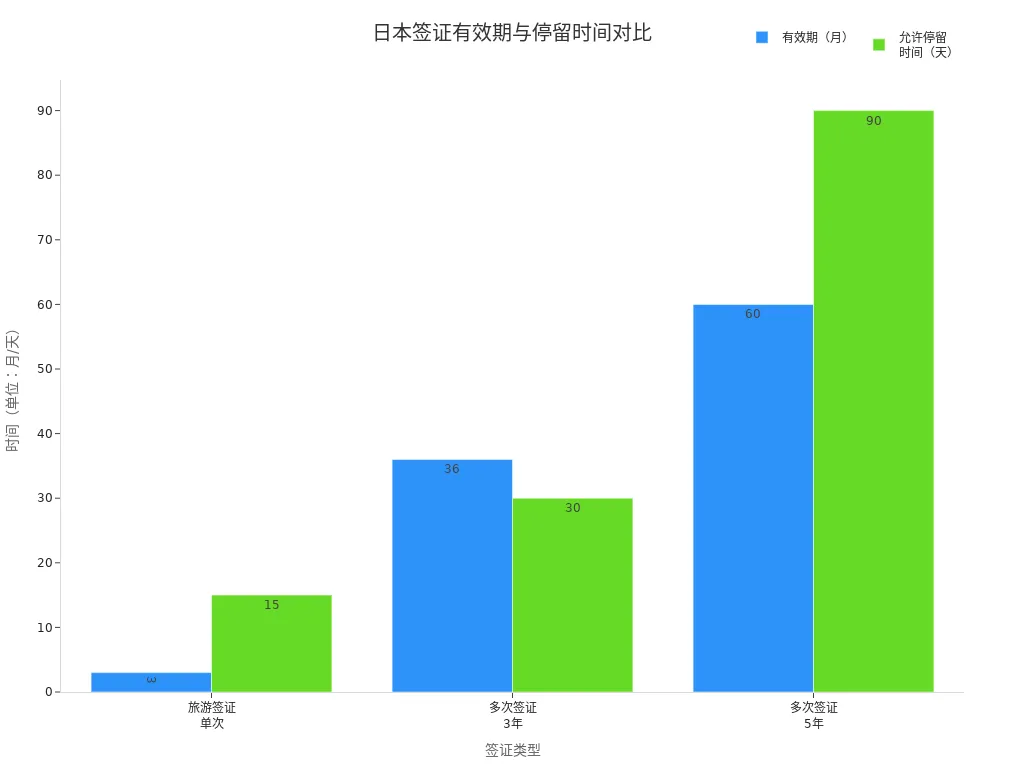- EasyCard
- Trade
- Help
- Announcement
- Academy
- SWIFT Code
- Iban Number
- Referral
- Customer Service
- Blog
- Creator
Overview of Japan Visa Application Costs, Requirements, and Processing Time from the U.S.

Image Source: unsplash
When applying for a Japan visa from the U.S., you typically need to prepare a passport, visa application form, recent 2x2-inch white-background photo, and itinerary. Cost-wise, a single-entry visa is about $28, a multiple-entry visa is around $56, and a student visa ranges from $420 to $560 (calculated at 1 USD = 7.1 RMB). Processing time is generally 5-7 working days. You need to arrange materials as required, photos cannot be edited with filters, and materials must be valid within three months.
| Visa Type | Cost (USD) | Processing Time (Working Days) |
|---|---|---|
| Tourist Visa | 28 | 5-7 |
| Multiple-Entry Visa | 56 | 5-7 |
| Student Visa | 420-560 | 10-15 |
Key Points
- Applying for a Japan visa requires a passport, application form, white-background photo, and itinerary, with materials valid for no more than three months.
- Tourist visa costs about $28, multiple-entry visa about $56, student visa costs are higher, with processing times generally ranging from 5 to 15 working days.
- U.S. passport holders can enter Japan visa-free for up to 90 days; green card holders need to check visa requirements based on their country of origin.
- Provide authentic financial proof and itinerary to avoid rejection due to incomplete or false materials.
- It’s recommended to book appointments and prepare materials 1-2 months in advance, avoiding peak periods to improve visa approval chances.
Visa Types and Eligible Applicants

Image Source: pexels
Common Visa Types
When considering a Japan visa application, you first need to understand the different visa types. Japan visas are mainly divided into three categories:
- Short-Term Stay Visa: Suitable for tourism, visiting relatives, business trips, or transit. For example, traveling to Japan for sightseeing, visiting friends, attending meetings, or transiting falls under this category.
- Long-Term Stay Visa: Suitable for those needing to reside in Japan long-term. For instance, studying, working, family reunification, or participating as a highly skilled professional, digital nomad, or working holiday participant requires this visa type.
- Permanent Residency Application: If you have lived in Japan continuously for at least 10 years (1 year for highly skilled professionals) with stable income and a good record, you can consider applying for permanent residency.
Eligible Applicants
Different visa types correspond to different groups. You can choose the appropriate visa based on your situation:
- Short-term visas are suitable for tourists, visitors to friends or family, and short-term business travelers.
- Long-term visas are suitable for students, workers, family reunification, and skilled immigrants.
- Permanent residency is mainly for those who have lived in Japan long-term and meet the conditions.
Tip: When preparing to apply for a Japan visa, make sure to select the correct visa type based on your status and purpose to increase approval chances.
Do You Need to Apply for a Japan Visa?
Whether you need to apply for a Japan visa depends on your status:
- If you hold a U.S. passport, you can enter Japan visa-free for up to 90 days for tourism, business, visiting friends or family, or short-term study. You only need a valid passport, return ticket, proof of accommodation, and sufficient funds.
- If you are a U.S. green card holder, visa requirements depend on your country of origin. A U.S. green card does not grant visa-free entry. If your home country requires a visa, you must apply for a Japan visa.
- Holders of diplomatic or official passports still need to apply for a visa.
- If you are only transiting and not leaving the airport, with a boarding pass for the onward flight, you can stay in the international transit area for 24 hours visa-free.
Note that you cannot engage in paid work during a visa-free stay. If you plan to stay in Japan for more than 90 days, you must apply for the appropriate long-term visa in advance.
Japan Visa Application Requirements

Image Source: unsplash
Basic Requirements Checklist
When applying for a Japan visa, you first need to prepare a complete set of basic materials. All materials must be valid within three months, and only the passport and other originals will be returned; other materials are non-returnable. You need to arrange materials in the specified order, with the application form on top, and avoid using staples or paper clips. Photos must be 2x2-inch white-background ID photos taken within six months, unedited with filters, and glued to the application form. Specific materials are listed below:
| No. | Required Materials | Specific Requirements and Notes |
|---|---|---|
| 1 | Passport | Valid for at least six months |
| 2 | Photos | Two 2-inch color white-background photos, one glued to the application form |
| 3 | Personal Information Consent Form | Must be filled and signed, official template provided |
| 4 | Household Register and ID Copy | All pages of the household register; for collective registers, provide the first page and personal page; U.S. applicants need proof of U.S. residency |
| 5 | Employment Certificate (for employed) | Printed on company letterhead, signed by a supervisor with company stamp, stating position, employment duration, and annual income |
| 6 | Copy of Business License (for employed) | Stamped with company seal |
| 7 | Bank Statement or Tax Payment Proof | Six months or more, choose one; bank statement needs bank stamp (e.g., Hong Kong banks) |
| 8 | Japan Travel Application Form | Fully completed, signed by hand, with a 4.5x4.5 cm photo attached |
Tip: When filling out the application form, use Chinese and print it double-sided. Photo size must be 4.5 cm x 4.5 cm, and you must personally attach it to the form.
Financial and Itinerary Proof
You need to provide authentic and sufficient financial proof. Typically, you need to prepare 3-6 months of bank statements, preferably from international banks like those in Hong Kong. Bank statements should show regular income and expenses, with a recommended balance between $7,000 and $14,000 (calculated at 1 USD = 7.1 RMB). Avoid sudden large deposits, as they may raise suspicions about the source of funds. If your salary statements are unstable, you can supplement with annual tax returns, property deeds, vehicle registration, stock statements, or credit card statements, but bank statements are mandatory. Housewives can provide their spouse’s income and asset proof, which must also meet the above requirements.
For a five-year multiple-entry visa, requirements are stricter. You need a balance of over $70,000 after each transaction in the past six months, or an annual income of $70,000 in the previous year, or property worth at least $280,000 (or $560,000 for jointly owned property). Additionally, bank statement balances in the past six months cannot fall below $7,000, and funds cannot be deposited in a lump sum. All financial proof must be authentic; falsification will lead to rejection and a negative record.
Reminder: Financial proof and itinerary are key to proving your ability to cover expenses in Japan. You also need to prepare flight and hotel bookings in advance, and the itinerary must match your actual plans, with a visa stay generally not exceeding 15 days.
Additional Supporting Materials
In some cases, you may need to provide additional materials to support your Japan visa application. For example, if your financial proof, study plan, or ties to Japan are insufficient, consider preparing the following:
- Bank deposit proof, scholarship proof, or parental income proof
- Study plan, Japanese language proficiency proof, invitation letter from friends/relatives, or academic exchange invitation
- Award certificates, internship proof, or recommendation letters
- If relying on parents’ finances, provide their employment and income proof
- For a five-year visa, you may need to submit employment proof, bank deposit proof, accommodation proof (e.g., lease agreement or hotel booking), health check report, or no-criminal-record proof
When preparing additional materials, ensure they are authentic, well-organized, and accurately translated. All supplementary materials must meet the latest requirements of the Japanese embassy or consulate. Bring originals to interviews, remain polite, and express yourself clearly. Track your application status through official channels and respond promptly to requests for additional materials.
Note: Additional materials should align with your personal circumstances. Avoid providing false materials, as they will affect your visa record.
Japan Visa Application Process
Online Application and Appointment
When applying for a Japan visa from the U.S., the first step is usually booking an online appointment. Visit the official website of the Japanese embassy or consulate in your area and find the visa appointment portal. Follow these steps:
- Access the Japanese embassy or consulate website and locate the “Visa Application” or “Online Appointment” section.
- Fill in personal information online, including name, passport number, contact details, and travel plans.
- Select a suitable time to submit materials. Some regions require booking an interview, while others only need a material submission slot.
- After submitting the appointment request, you will receive a confirmation email. Save this email as proof for submitting materials.
- Before the appointment time, organize all materials, ensuring they are authentic, complete, and in the correct order.
Tip: Plan your application time in advance. During peak periods (e.g., summer or holidays), appointment slots are limited, so book 1-2 months early.
Material Submission Methods
You can submit application materials in different ways. The common methods are:
- In-person submission at the Japanese embassy or consulate in the U.S. Bring all originals and copies, arrive at the appointed time, show the confirmation email, and submit materials.
- Submission by mail. Organize materials as required and use a trackable courier service to send them to the designated address. Include a return envelope and disclaimer. Mailing takes longer, so prepare early.
Some regions allow submission through qualified travel agencies or agents. You can opt for fully electronic submission to save time. Regardless of the method, ensure materials are in the correct order, with the application form on top, photos glued, and no staples or paper clips used.
Note: The Japanese embassy in the U.S. does not accept walk-in submissions; follow the specific requirements of your consulate.
Payment Methods
When submitting materials, you need to pay the visa fee. Common payment methods include:
- On-site payment: Pay with cash, check, or credit card when submitting materials, as per consulate requirements.
- Mail payment: If mailing materials, include a check or money order with the correct amount and payee.
- Agency payment: If using a travel agency or agent, they typically collect fees on your behalf. Confirm fee details and payment methods in advance.
Visa fees are in USD. At 1 USD = 7.1 RMB, a tourist visa costs about $28, a multiple-entry visa $56, and a student visa $420-$560. Some agencies charge additional service fees, typically $15-$65.
Reminder: Keep payment receipts for future reference when checking status or collecting your passport.
Review and Visa Issuance
After submitting materials and paying fees, the review process begins. The Japanese consulate will review your materials, typically taking 5-7 working days. Some regions may take longer, so be patient.
The review process includes:
- The consulate reviews your materials, checking personal information, financial proof, and itinerary.
- If there are questions, staff may contact you by phone or email for additional materials or clarification.
- Upon approval, collect your passport and visa as agreed. Some regions offer return mailing; prepare a return envelope and disclaimer.
- If rejected, the consulate will return materials with reasons. You can reapply after addressing the issues.
Tip: Keep contact information accessible and monitor consulate notifications. Apply 2 months in advance to handle unexpected delays.
Visa Costs
Tourist Visa Costs
When applying for a Japan tourist visa from the U.S., you need to pay the official visa fee. According to the official announcement on June 29, 2024, a single-entry tourist visa costs 200 RMB, approximately $28 at the current exchange rate (1 USD = 7.1 RMB). This fee covers only the consulate’s official charge, excluding any agency or service fees. Note that visa fees are non-refundable, even if your application is rejected.
Multiple-Entry Visa Costs
If you plan to visit Japan multiple times, you can apply for a multiple-entry visa. The official fee is 400 RMB, about $56. This visa suits frequent travelers for business, family visits, or long-term needs. Requirements are stricter, such as higher bank statement or asset proof. Prepare materials carefully to ensure approval.
Agency Service Fees
You can use qualified travel agencies or agents to submit materials. Agency fees typically range from $15 to $65 (100-450 RMB). Fees vary by agency and service type. Check fee details, including whether translation or itinerary booking is included. Keep payment receipts for reference.
Tip: Use official or recommended channels for payments to avoid issues affecting your application progress.
Processing Time
Standard Processing Time
When applying for a Japan tourist visa from the U.S., expect 5-8 working days. Other visas, like business or family visit visas, typically take 4-7 working days. Some visa centers may process faster (as quick as 3 days) or slower (up to 10 days). Processing time starts the second working day after the consulate or agency receives your materials. Complete and correctly ordered materials can shorten waiting times.
Peak Seasons and Special Cases
Peak periods like summer, winter holidays, and Chinese or Japanese statutory holidays can slow processing due to high demand. Follow these tips:
- Avoid submitting during holidays or peak travel seasons.
- For urgent needs like medical emergencies or business, provide proof to request faster processing.
- Keep your phone and email accessible for consulate requests for additional materials or verification.
- If waiting too long, contact the consulate to check progress.
Preparing and submitting materials 1-2 months early can prevent delays during peak times.
Expedited Processing Option
Japan visas support expedited processing. Submit a written request explaining the urgency and pay an additional fee, which varies by visa type and expedited duration. Expedited processing typically takes 4-6 working days. Family visit and business visas have the fastest expedited processing. Prepare all materials, pay the fee, and await consulate calls or requests. Expedited service is not guaranteed, and fees are separate from standard consulate charges. Choose expediting based on your needs.
Reminder: Plan your application timeline and prepare materials early to reduce risks of delays.
Common Questions and Notes
Is an Interview Required?
In most cases, you don’t need an interview for a Japan visa. The consulate typically reviews written materials. Interviews are rare and usually required for specific visas like long-term study or work visas or if materials raise questions. Tourist, family visit, and business visas generally don’t need invitation letters. If asked for additional materials or an interview, cooperate promptly and keep contact channels open.
Material Resubmission and Rejections
Be meticulous when preparing materials. Common reasons for resubmission or rejection include:
- Errors or omissions in personal information, like incorrect birth dates or incomplete forms.
- Insufficient or expired proof, like inadequate bank statements or outdated deposit proof.
- Policy changes requiring new materials like health certificates or travel insurance.
- Missing key documents or non-compliant materials (e.g., unclear financial proof).
- Concealing or refusing to provide materials leads to direct rejection.
If you receive a resubmission notice, contact the consulate promptly to understand requirements and deadlines. Resubmission may extend processing time. If materials remain inadequate, rejection is likely. Prepare complete and accurate materials initially to avoid repeated submissions.
Application Pitfalls
You may encounter pitfalls during application. The table below summarizes common pitfalls, explanations, and impacts:
| Common Pitfall | Explanation | Impact |
|---|---|---|
| Language skills guarantee admission | Studying Japanese doesn’t ensure university entry | Both language and admission qualifications are required |
| Money ensures study abroad | Focusing only on finances, ignoring material authenticity | Financial proof must be detailed and authentic; strict review |
| Ignoring Chinese grades | Assuming Chinese grades are unimportant | Affects scholarship and top university applications |
| Language proficiency ensures admission | Ignoring academic credentials and entrance exams | Rejection due to unmet conditions |
| Inkan certificate guarantees visa | Assuming a certificate ensures approval | Visa officers review all materials comprehensively |
Avoid these pitfalls by researching Japan’s university and visa requirements and preparing authentic, detailed materials.
Validity and Stay Duration
After obtaining a Japan visa, note its validity and allowed stay duration. Different visa types have the following rules:
| Visa Type | Validity | Allowed Stay | Notes |
|---|---|---|---|
| Single-Entry Tourist Visa | 3 months | 15 days | Must enter within validity |
| Multiple-Entry Visa (3 years) | 3 years | 30 days per entry | Maximum 30 days per entry |
| Multiple-Entry Visa (5 years) | 5 years | 90 days per entry | Maximum 90 days per entry, 180 days per year |

For multiple-entry visas, you must enter Japan within three months of issuance. Total stay in Japan cannot exceed 180 days per year. Plan your itinerary to avoid overstaying.
Consulate Announcements and Contact Information
During the application process, stay updated on the Japanese embassy or consulate’s latest announcements. Policies may change, affecting material requirements or processes. Access updates via:
- Visiting the Japanese embassy or consulate website for visa announcements and FAQs.
- Following official social media accounts for real-time notifications.
- Contacting the consulate by phone or email for inquiries.
Tip: Prepare materials early and check consulate announcements regularly to avoid delays due to policy changes.
When applying for a Japan visa, monitor consulate appointment availability 3-4 months in advance and reserve a 2-month buffer. Peak periods like Christmas, Chinese New Year, and summer slow processing. Prepare passport, photos, itinerary, and financial proof to avoid missing documents. Regularly check the Japanese embassy in the U.S. website (Embassy of Japan in the U.S.) for the latest policies and contacts. This will enhance your approval chances and reduce wait times.
| Visa Type | Key Materials to Prepare | Specific Tips |
|---|---|---|
| Tourist Visa | Passport, application form, photos, itinerary, financial proof | Passport valid for 6+ months, clear photos, consistent form information |
| Business Visa | Invitation letter, dispatch letter, event plan | Formal invitation, detailed event schedule |
| Family Visit Visa | Invitation letter, relationship proof, financial guarantee | Authentic proof, clear itinerary |
| Student Visa | Admission notice, financial proof, health certificate | Accurate materials, health certificate from designated hospital |
FAQ
Can You Enter Japan Visa-Free with a U.S. Passport?
With a U.S. passport, you can enter Japan visa-free for up to 90 days. Prepare a valid passport, return ticket, and accommodation proof without needing a visa.
How Early Should You Apply for a Japan Visa?
Apply 1-2 months in advance for material preparation and appointment booking. During peak periods like summer or holidays, apply 3 months early to avoid delays.
Can You Use a Hong Kong Bank Account for Financial Proof?
You can use a Hong Kong bank account statement as financial proof. Statements should show 3-6 months of regular income and a balance of at least $7,000 (1 USD = 7.1 RMB).
Can You Cancel an Application and Get a Refund?
You cannot cancel an application or refund the visa fee after submission. Fees are non-refundable, even if rejected. Ensure materials are accurate before submitting.
Can You Apply with Electronic Materials?
Some agencies support fully electronic submissions. Confirm requirements with the agency. The consulate has strict rules on material order and format, so comply accordingly.
When applying for a Japanese visa in the U.S., proving sufficient funds and paying application fees are crucial for a successful application. Traditional international wire transfers often come with high fees, slow processing times, and potential losses from unfavorable exchange rates. To make your trip to Japan smoother, we recommend an efficient and low-cost cross-border financial solution.
BiyaPay is designed for global travelers and digital nomads, supporting the seamless exchange between various fiat and digital currencies, allowing you to easily convert USD to other currencies. Our real-time exchange rate query feature helps you seize the best conversion opportunities. What’s more, we offer remittance fees as low as 0.5% with same-day delivery, ensuring your funds arrive quickly and securely. Say goodbye to the complicated processes and high costs of traditional banks and let BiyaPay be your trusted financial partner for global travel. Registration is easy, so start your convenient financial journey now. Register with BiyaPay and make your financial management as smooth and worry-free as your trip.
*This article is provided for general information purposes and does not constitute legal, tax or other professional advice from BiyaPay or its subsidiaries and its affiliates, and it is not intended as a substitute for obtaining advice from a financial advisor or any other professional.
We make no representations, warranties or warranties, express or implied, as to the accuracy, completeness or timeliness of the contents of this publication.




Contact Us
Company and Team
BiyaPay Products
Customer Services
is a broker-dealer registered with the U.S. Securities and Exchange Commission (SEC) (No.: 802-127417), member of the Financial Industry Regulatory Authority (FINRA) (CRD: 325027), member of the Securities Investor Protection Corporation (SIPC), and regulated by FINRA and SEC.
registered with the US Financial Crimes Enforcement Network (FinCEN), as a Money Services Business (MSB), registration number: 31000218637349, and regulated by FinCEN.
registered as Financial Service Provider (FSP number: FSP1007221) in New Zealand, and is a member of the Financial Dispute Resolution Scheme, a New Zealand independent dispute resolution service provider.




















